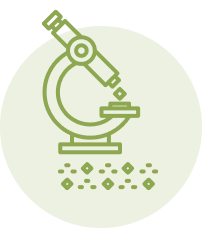Blossom-end rot is a physiological disorder caused by a calcium imbalance. While blossom-end rot can develop in many types of plants, from cucumbers to peppers, it is perhaps most commonly seen in tomato plants. Like all other fruits and vegetables, tomatoes need nutrients for proper growth and development. When the tomato doesn’t obtain a sufficient amount of calcium from the soil, the tissue decomposes and thus rotting ensues.
Causes of blossom end-rot:
- Inconsistent soil moisture (too much, too little, or too much fluctuation in watering)
- pH imbalance- either too low or too high
- Overuse of fertilizer
- Cold temperatures
Prevention
When blossom-end rot has embedded the tomato, it cannot be reversed; prevention is the method of defense. Follow these tips to help prevent blossom-end rot and ensure a prosperous tomato garden:
1) Inconsistent Moisture: Inconsistent moisture is the most common culprit for the development of blossom-end rot.
The fix: Careful monitoring can prevent your plants from getting too much or too little water. Consider buying a rain gage to monitor rainfall, or use mulch to reduce evaporation.
2) pH Imbalance: Most plants, including tomatoes, grow best at a slightly acidic to neutral pH, because this allows the nutrients in the soil to be available to the plants.
The fix: Maintaining a soil pH of 5.5-7.5 will produce the best results. If your soil tests above the optimal range, try Earth Science’s Fast Acting Sulfur® to help lower it. If your soil tests below the range, use Earth Science’s Fast Acting™ Lime to help increase the soil’s pH.
3) Soil Fertility: Blossom end-rot is caused by a localized calcium deficiency.
The fix: Applying Gypsum provides the necessary calcium that tomato plants require.
Ensuring the soil has sufficient calcium can be helpful in preventing blossom end-rot, but only when soil moisture levels are adequately maintained. In addition, ensuring that plants are not overfertilized with nitrogen helps to ensure that growth is well balanced and stems are sturdy. Earth Science Fast Acting Gypsum® can be used to boost the calcium level in soils.
4) Cold Temperatures: Cold temperatures are also likely to cause blossom-end rot. If tomato plants are exposed to cold temperatures and thus, cold soil, they are less able to take in nutrients.
The fix: Know when to start a tomato garden in your climate, and plant accordingly. Also consider planting tomatoes in a pot, so they can be brought indoors should the temperature unexpectedly drop.
While blossom-end rot cannot be cured, there are plenty of preventative measures that can be taken to ensure a healthy, fruitful tomato plant. For more information on how Earth Science’s products can help with your blossom-end rot, contact us today!



